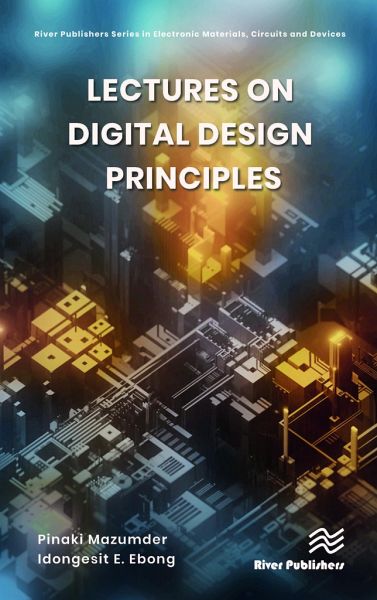Lectures on Digital Design Principles
Versandkostenfrei!
Versandfertig in über 4 Wochen
Weitere Ausgaben:

PAYBACK Punkte
65 °P sammeln!




This book provides students an accessible reference for engaging with the building blocks of digital logic design.
Pinaki Mazumder is currently a Professor with the Department of Electrical Engineering and Computer Science, University of Michigan (UM), Ann Arbor. He was for six years with industrial R&D centers that included AT&T Bell Laboratories, where in 1985 he started the CONES Project the first C modeling-based very large scale integration (VLSI) synthesis tool at India's premier electronics company, Bharat Electronics, Ltd, India. Here, he developed several high-speed and high-voltage analog integrated circuits intended for consumer electronics products. He is the author or coauthor of more than 200 technical papers and four books on various aspects of VLSI research works. His current research interests include current problems in nanoscale CMOS VLSI design, computer-aided design tools, and circuit designs for emerging technologies, including quantum MOS and resonant tunneling devices, semiconductor memory systems, and physical synthesis of VLSI chips. Dr. Mazumder is a Fellow of the American Association for the Advancement of Science (2008). He is a recipient of the Digitals Incentives for Excellence Award, BF Goodrich National Collegiate Invention Award, and Defense Advanced Research Projects Agency Research Excellence Award. Idongesit E. Ebong, Ph.D. is a patent agent at Nixon Peabody in Chicago. He practices in the technical areas of electrical, computer, and mechanical engineering. He received his Ph.D. degree in electrical engineering from the University of Michigan, Ann Arbor. His research areas included digital/analog integrated circuit design, focused primarily on non-traditional devices like memristors and tunneling transistors for low power applications. Leveraging his background, he helps clients protect inventions in computer architecture and networks, digital and analog circuits, software systems, microfabrication equipment design, MEMS sensors, machine learning, and telecommunications.
Produktbeschreibung
- Verlag: River Publishers
- Seitenzahl: 248
- Erscheinungstermin: 27. Juli 2023
- Englisch
- Abmessung: 234mm x 156mm x 18mm
- Gewicht: 567g
- ISBN-13: 9788770223614
- ISBN-10: 8770223610
- Artikelnr.: 67822350
Herstellerkennzeichnung
Libri GmbH
Europaallee 1
36244 Bad Hersfeld
gpsr@libri.de
Für dieses Produkt wurde noch keine Bewertung abgegeben. Wir würden uns sehr freuen, wenn du die erste Bewertung schreibst!
Eine Bewertung schreiben
Eine Bewertung schreiben
Andere Kunden interessierten sich für













